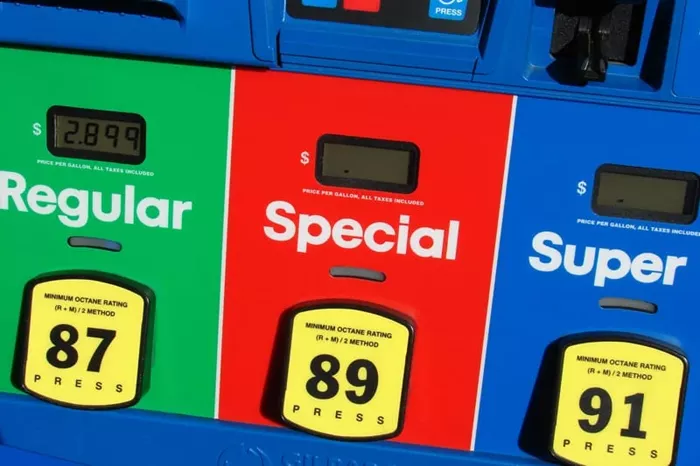Gasoline is a vital energy source, powering millions of vehicles worldwide. However, the composition of gasoline has evolved over the years, with the inclusion of ethanol becoming a significant aspect. This article delves into the ethanol content of regular gasoline, its implications, benefits, and challenges.
Introduction to Ethanol in Gasoline
What is Ethanol?
Ethanol, also known as ethyl alcohol, is a renewable fuel made from various plant materials, collectively known as biomass. It is commonly derived from corn, sugarcane, and other starch-based crops. Ethanol is an alcohol that is blended with gasoline to increase octane levels and improve emissions quality.
Why is Ethanol Added to Gasoline?
Ethanol is added to gasoline for several reasons:
Octane Boost: Ethanol increases the octane rating of gasoline, helping to prevent engine knocking and improve performance.
Environmental Benefits: Ethanol burns cleaner than gasoline, reducing greenhouse gas emissions and other pollutants.
Renewable Resource: As a biofuel, ethanol is renewable and can reduce reliance on fossil fuels.
Ethanol Blends in Regular Gasoline
Common Ethanol Blends
Ethanol is blended with gasoline in various concentrations. The most common blends include:
E10: Contains 10% ethanol and 90% gasoline. This is the standard blend for regular gasoline in many regions.
E15: Contains 15% ethanol and 85% gasoline. This blend is available in some areas and can be used in newer vehicles.
E85: Contains 85% ethanol and 15% gasoline. E85 is primarily used in flex-fuel vehicles designed to run on high ethanol blends.
Regulatory Standards
Government regulations play a crucial role in determining ethanol content in gasoline. For example:
United States: The Renewable Fuel Standard (RFS) mandates the inclusion of renewable fuels like ethanol in transportation fuel.
European Union: The EU has set targets for renewable energy usage in transport, encouraging the use of biofuels like ethanol.
Production and Distribution of Ethanol-Blended Gasoline
Ethanol Production Process
Ethanol is produced through the fermentation of sugars in biomass. The production process includes:
Fermentation: Yeast is added to biomass to ferment sugars into ethanol.
Distillation: The fermented mixture is heated to separate ethanol from water and other components.
Dehydration: Ethanol is dehydrated to achieve the desired purity level for blending with gasoline.
Distribution Infrastructure
Distributing ethanol-blended gasoline involves a robust infrastructure, including:
Transportation: Ethanol is transported from production facilities to blending terminals via rail, truck, or pipeline.
Blending: At blending terminals, ethanol is mixed with gasoline in precise ratios to create the desired blend.
Retail: Blended gasoline is then distributed to gas stations for consumer use.
See also: Which Premium Fuel Has No Ethanol?
Benefits of Ethanol-Blended Gasoline
Environmental Advantages
Ethanol-blended gasoline offers several environmental benefits:
Reduced Emissions: Ethanol burns cleaner than gasoline, resulting in lower emissions of carbon monoxide, hydrocarbons, and nitrogen oxides.
Greenhouse Gas Reduction: Using ethanol can help reduce greenhouse gas emissions, contributing to climate change mitigation.
Economic Impact
The inclusion of ethanol in gasoline has positive economic implications:
Job Creation: The ethanol industry supports jobs in agriculture, production, and distribution.
Energy Security: Ethanol production reduces reliance on imported oil, enhancing energy security.
Performance Benefits
Ethanol can improve vehicle performance:
Higher Octane: Ethanol increases the octane rating of gasoline, enhancing engine performance and efficiency.
Clean-Burning: Ethanol helps keep engines cleaner by reducing carbon deposits.
Challenges of Ethanol in Gasoline
Compatibility Issues
Ethanol can pose compatibility challenges:
Older Vehicles: Vehicles manufactured before the mid-2000s may not be compatible with higher ethanol blends.
Small Engines: Some small engines, such as those in lawnmowers and boats, can be damaged by ethanol-blended gasoline.
Energy Content
Ethanol has a lower energy content than gasoline:
Reduced Fuel Economy: Vehicles running on ethanol-blended gasoline may experience a slight decrease in fuel economy due to the lower energy content of ethanol.
Production Concerns
Ethanol production raises some concerns:
Land Use: Large-scale ethanol production requires significant agricultural land, which can impact food production and prices.
Water Usage: Ethanol production is water-intensive, raising concerns about water resource management.
Conclusion
Ethanol has become an integral component of regular gasoline, offering numerous benefits, including improved octane ratings, reduced emissions, and enhanced energy security. However, challenges such as compatibility issues, lower energy content, and production concerns must be addressed. Technological advancements, policy support, and sustainable practices will play vital roles in shaping the future of ethanol in gasoline. As the world continues to seek cleaner and more sustainable energy solutions, ethanol-blended gasoline will likely remain a key player in the energy landscape.
Related topic:

